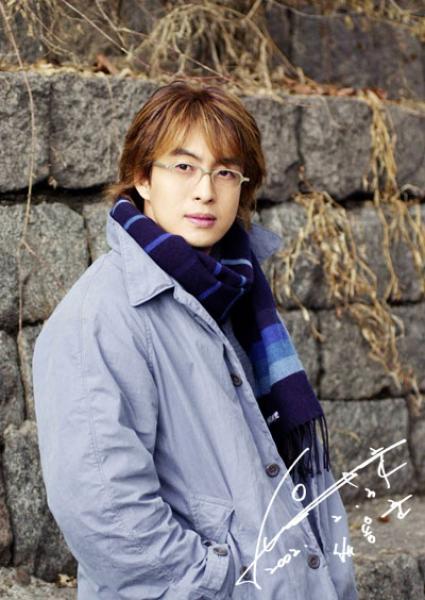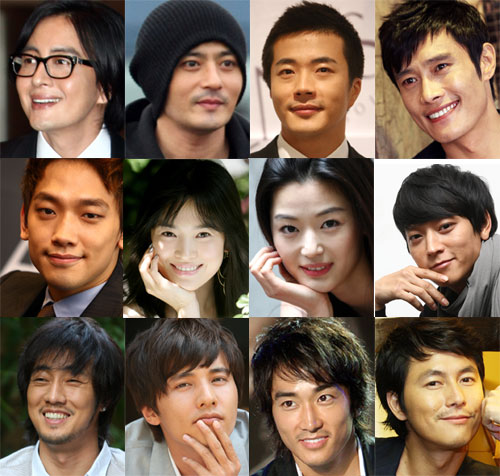
[Old Article] FEATURE : The rise and rise of Asian entertainment
By Rina Jimenez-David : Columnist
Philippine Daily Inquirer
Posted date: January 27, 2008
Repost : http://twssg.blogspot.com/
MANILA, Philippines -There are currently two Korean telenovelas, as soap operas are known here, showing on primetime Philippine television. ABS-CBN, the “Kapamilya” network, is airing “Spring Waltz,” the last of the four “Endless Love” series that ushered in the popularity of the Korean TV drama series around Asia and other parts of the world.
GMA-7, the “Kapuso” network, on the other hand, is airing “The First Shop of Coffee Prince,” which stars Yun Eun-hye, who won hearts in Korea and elsewhere in Asia as the commoner-turned-Crown Princess in the fantasy series “Princess Hours.”
“Spring Waltz” has good-looking young stars and features breathtaking scenery in places as diverse as Salzburg and Hallstatt in Austria and picturesque islands and beaches in southern Korea. But the series, which centers on the themes of childhood memory and mature love, the same themes that director/producer Yoon Sook-ho explored in “Autumn in My Heart,” “Summer Scent” and especially “Winter Sonata,” has failed to ignite the imagination and loyalty of Filipino fans.
In contrast, “Coffee Prince” on GMA-7 is the only foreign show to land among the Top 10 primetime evening shows. The early January ratings give “Coffee Prince” a very respectable 29 percent rating, tying with “La Vendetta,” which has been running much longer. GMA-7 is also airing “Come Back Soon-ae,” a comedy of mixed identities and marital indiscretion, that airs in the early afternoon slot and ranks number 8 among the Top Ten daytime shows.
Ironically, Yun Eun-hye, whose charm and naivete power “Coffee Prince,” where she plays a warm-hearted tomboy, first won the hearts of Pinoy viewers in “Princess Hours,” which aired on ABS-CBN and was a ratings leader, too.
Still, the performance of these TV dramas has proven premature, if not erroneous, all those predictions of the demise or decline in popularity of the “Kimchi-novelas.” Aside from the three shows currently airing on the two major networks, other soaps, from Korea as well as Taiwan, air on Q-TV, GMA-7’s sister station whose format has been targeted towards the female audience. It seems the Pinoy (or rather, Pinay) appetite for drama, romance and a smidgen of comedy with an Asian touch is not about to disappear anytime soon.
“HALLYU” is the term coined, allegedly by the Chinese media, to refer to the “wave” of popular Korean entertainment inundating East and Southeast Asia and even the Middle East, Central Asia and the homelands of the telenovela, Mexico and Latin America.
Most observers trace the beginnings of the “Hallyu” phenomenon to the 1990s, when movie and TV artists and production houses experienced a creative re-birth after the liberalization of censorship guidelines and the infusion of capital. Frances Gateward, a professor of Cinema Studies in the University of Illinois, interviewed by a Korean daily, says the decade saw the creation of “out-of-the-box entertainment” by a new generation of filmmakers. With 70 percent of movies created by fresh graduates of film school, the Korean new blood, says Gateward, gave Korean films “a different sensibility.”
Indeed, even today, Korean cinema accounts for some of the most innovative, edgy and disturbing movies being made in the world. True, Korea has its share of romantic comedies, gangster films and even so-called “Asian horror” flicks. But movies like “Old Boy,” “Sympathy for Lady Vengeance” (both made by director Park Chan-wook) and even a whodunit like “Memories of Murder,” or a gay historical drama like “The King and the Clown” testify to the vibrant Korean movie scene and the outpouring of creativity and daring.
And yet, the “Hallyu” wave was powered not by films but by soap operas, a genre despised and overlooked until “Winter Sonata” set a record for TV ratings in Japan—and thence in Malaysia, Singapore, Taiwan and Hong Kong (it was a mild hit here)—and transformed its male lead, Bae Yong-jun, into the pre-eminent “Hallyu” star.
Since “Winter Sonata,” produced in 2002, other Korean TV dramas have won their own loyal following. Among them: “Full House,” “Stairway to Heaven,” “Lovers in Paris” and “Jewel in the Palace,” which was so popular in the region that Hong Kong entrepreneurs even created a “Jang-geum” (the name of the main character and the title of the series in Korea) theme park in their territory. The show even created a boomlet of interest in Korean food (and restaurants) and folk medicine.
The shows have likewise catapulted Korean performers to “Asian Superstar” status. Aside from Bae Yong-jun, BYJ to his fans and “Yonsama” to the Japanese housewives who are his most ardent followers, other Korean stars popular in the region are Rain, who is a singer and dancer aside from being an actor; Kwon Sang-woo, better known as “Cholo” hereabouts; Lee Byung-hun, dubbed “Byonsama” by some Japanese fans; Choi Ji-woo, the female lead in “Winter Sonata;” Lee Young-ae of “Jewel in the Palace;” Song Hye-kyo of “Autumn in my Heart” and “All In;” and the winsome Yun Eun-hye.
It’s pretty obvious why products of the “Hallyu” wave would be so popular in Asia. The characters look Asian (though concededly more handsome and lovely than is normal), and the dilemmas they confront (setting aside the good old cancer scare) are familiar and unique to societies ruled by social harmony and filial loyalty. For instance, lovers are bothered no end when their parents, grandparents or other relatives disapprove of their beloved, a concern which would be laughed off in Western shows or movies.
But why is “Hallyu” also making inroads in the Middle East and Latin America, and even among Asian communities in the US? Some commentators attribute the soaps’ popularity to the conservative values espoused in the shows. A viewer would be lucky to catch a kissing scene, much less a bed scene, an observer once wrote. Unlike in Western entertainment, including sit-coms, where characters have no compunction about jumping into bed on the first date, lovers in Koreanovelas suppress their emotions and conceal their desires, waiting until the proper time to reveal their feelings, content to hold hands and gaze longingly at each other and postponing till after marriage the consummation of their love. (Usually hiding under a blanket when things get physical.)
As soap producers and writers have grown more confident, however, they have allowed their characters greater liberties. “My Name is Kim Sam-soon,” a huge hit in Korea but not so popular abroad, took a comic view of the plight of maturing single women pressured by society to get married and bear children. Not only does Sam-soon go through a painful break-up from her long-time boyfriend, she also falls for a younger man and has sex without the benefit of matrimony.
Jang Bong-choi, in his blog, claims the popularity of Korean entertainment is a confluence of conservative Confucian values and the economic success of Korea, giving viewers a lifestyle to aspire to, where modernity exists alongside tradition. Viewers looking for a less pasteurized view of life, however, would do well to watch Korean movies, many of which are sexually explicit and violent.
LONG before the “Hallyu” wave broke on the shores of Korea’s neighbors, movies made in Japan, Hong Kong and China had been winning attention and accolades from reviewers and film festival organizers in Europe and the US. They also started winning adherents like Francis Ford Coppola and Quentin Tarantino, earning not just favorable reviews but also investments and marketing support.
I have my “suki” DVD supplier to thank for broadening my Asian entertainment vistas, urging me to break out of my Korean fixation and “try Japanese and Hong Kong movies for a change.” (As an aside, whatever you think of pirating, the DVD vendors at least offer alternative choices. Only rarely do Asian movies break into commercial theaters here, which are dominated by Hollywood products.)
Thanks to my “suki,” I have seen a Japanese movie like “Shouting out Love in the Center of the World,” which is now my favorite romantic movie of all time. Before this, mainly because I’d long been hearing about Wong Kar-wai, the Hong Kong director, I dragged my husband to a theater for “In the Mood for Love,” where we were entranced by the intricate dance of desire and manners between two cuckolded characters played by Tony Leung and Maggie Cheung. Leung, called the “Clark Gable of Asia,” most recently put his restrained acting to even more effective use in “Lust, Caution,” Ang Lee’s sex/espionage thriller set in wartime Shanghai.
One Asian actor whose career I have long followed is Takeshi Kaneshiro, who is Chinese-Japanese, drop-dead handsome (and a singer to boot) who is likewise fluent in English. I was initially intrigued by his good looks in “Returner,” a futuristic thriller, but failed to notice him in “Chungking Express.” He has made a musical, “Perhaps Love,” but despite scouring the aisles of Metrowalk, I have yet to find a DVD of it.
GIVEN the popularity of Asian movies and TV shows, it was only a matter of time before some cross-pollination took place. Unfortunately, two such media children of mixed parentage that I was able to catch have not exactly been proven successes.
One is the movie “The Promise,” directed by Chen Kaige, a prominent young Chinese director, and one of the most expensive movies made in China, with a production budget of about $35 million.
The film has a pan-Asian cast, from Korean Jan Dong-kun (you might recognize him from “All About Eve” though he has since concentrated on movies), Cecilia Cheung and Nicholas Tse from Hong Kong, Japanese Hiroyuki Sanada, and Chinese Liu Ye.
Sadly, the movie is a mess. The CGI is rather amateurish, and though it bares Chen Kaige’s signature flamboyance, the story is confused and sometimes too fevered for its own good.
The other attempt at cross-cultural entertainment was a Filipino-Malaysian production, the soap opera “Muli,” aired over GMA-7 and which had for its main stars Filipino Alfred Vargas and former “Miss Malaysia” Carrie Lee. Shown on the afternoon slot, “Muli” was, unfortunately, under-promoted. Its main selling point, I seem to recall, was that a budding romance between Lee and Vargas had led to the breakdown of Vargas’ relationship with starlet LJ Moreno.
I caught a few episodes and found the mixed cast, settings and language quite interesting. When the show is set in Malaysia, the characters speak Bahasa, with English or Filipino sub-titles. When the show moves to the Philippines, with characters talking in Filipino, sub-titles are in Bahasa or English. If such an approach works for DVD Koreanovela addicts, why shouldn’t it work for Filipinos and Malaysians?
Unfortunately, the producers and creative staff, emboldened by their cross-boundary efforts, were not so bold with their story line, structure or script. Despite the tri-lingual dialogue and the shifting settings, it still hewed to formula.
Maybe we need to wait awhile for creative energies to mature before we can see inter-Asian talents mesh effectively in one movie or soap. Or maybe it really is an impossible task to merge cultures in one story, as well as to work with a multi-cultural crew and cast. But if we can come up with a truly successful integrated pan-Asian film or soap opera, perhaps world peace is really at hand!
Hallyu Articles :
2009's Hallyu Wave (한류) by Jeanny Lee .
What is Hallyu wave...? / Hallyu Star คืออะไร?
Hallyu: Shortcomings and Potential
...Hallyu began roughly 12 years ago when the rest of Asia discovered Korean soap operas. One of the breakthrough dramas was a series 'Winter Sonata' starring Choi Ji-woo & Bae Young-Joon. After that, more Korean dramas saw their way to foreign shores and Korean films and music started to follow suit. Korean marketing people started to see a Korea-centric trend. They dubbed this flow "The Korean Wave" or Hallyu....



No comments:
Post a Comment
Note: Only a member of this blog may post a comment.